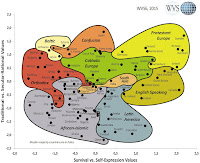This article studies the political economy of local politicians’ residential neighborhoods. We use Swedish data on the location of all politicians’ and citizens’ homes and their socioeconomic traits. A descriptive analysis shows that politicians live in neighborhoods with more socioeconomically advantaged residents and more of their own party’s voters. Next, we analyze whether having politicians in a neighborhood reduces the likelihood that new buildings are placed there, since these projects often generate local opposition. This analysis compares the neighborhoods of politicians with different degrees of political power and is restricted to close elections. We find that the presence of more politicians with governing power reduces the neighborhood’s proportion of new approved building permits for multifamily homes but not for single-family homes. The result is most likely explained by undue favoritism. We conclude that spatial political representation matters and that unequal spatial representation can increase geographic economic inequality.
Politicians’ Neighborhoods: Where Do They Live, and Does It Matter?
Olle Folke, Linna Martén, Johanna Rickne, and Matz Dahlberg

Kommentarer
Skicka en kommentar